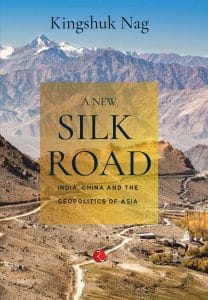A Silicon Valley in China?
Xi Jinping wants just that. This is especially because the US, which has advanced electronics and semiconductor technology, is not willing to part with the know-how. The US does not want China to master these technologies and therefore has restricted Chinese access to software, semiconductor and artificial intelligence-related initiatives. But China is keen to acquire these and is spending billions of dollars to develop the semiconductor industry, produce silicon chips and become a leader in the field. A fund of $29 billion backed by the Chinese government has been set up to fund investments in the semiconductor industry. Huge tax incentives are also given to manufacturers in the field. Pending the development of its own expertise, China imports (from whatever is available to it) $200 billion worth of semiconductors annually to power its smart devices, consumer electronics and computing products.
Analysts say that China will be required to invest billions of dollars to develop this chip technology, but once this investment fructifies, there will be huge productivity gains in many sectors. Therefore, China is going full steam ahead with this. Through the Shanghai Stock Exchange, China is trying to attract private capital into advanced chip development companies. China already produces 16 per cent of its own chip requirement, and by 2025, this is targeted to go up to 70 per cent of all the semiconductor that it requires and uses. ‘China has to build its own Silicon Valley and is doing so because it is forced to. The US will never part with its advanced chip technology although China has an industrial base, growing economy, good financial strength and good R&D facilities,’ says Stanford University-educated Srikanth Reddy, who ran an IT facility in Wuhan, China.
It is worth noting that the semiconductor industry was developed in China not only because of state incentives and initiatives from the government but also with help from Taiwan. Although at the government level, China and Taiwan don’t see eye to eye, many investors and semiconductor operators from Taiwan have moved their manufacturing operations to China. Taiwan has virtually been a colony of the US, so the Taiwanese manufacturers had the technology that is now being transferred to China. Apparently the Taiwanese had developed this technology but did not brand it as they possibly did not have the financial wherewithal to launch such an exercise.
Besides strong coordination between the semiconductor industry and the state, China has a goal for the industry. This agenda is to pursue a ‘fast forward’ approach, i.e. to leapfrog several generations of technology to catch up with international competition.
Also read: New book details how China is eyeing Ladakh for its ‘new silk road’ — the CPEC
Interestingly, China’s demand for semiconductors far outweighs the demand in the US, Europe, Japan or any other place in the world. This is because China is now producing or will produce smartphones, tablets, digital TV, wireless communications infrastructure, network hardware, computers and electronic medical devices.
Beijing has a separate IT district that was conceived after the Silicon Valley. Called the Zhongguancun Science Park, this complex spread across a huge area has many domestic and international companies. Not only this, there are markets for consumer IT goods. Companies located in the park include Google, Intel, Oracle, Advanced Micro Devices, Motorola, Sony and Erickson. The Microsoft Research Centre, which employs 5,000 people, is also located here. Analysts maintain that the distrust of the US and European agencies notwithstanding, these companies have invested in China because it is too big a market to ignore even by India.
 This is excerpt from A new Silk Road: India, China and the Geopolitics of Asia has been published with permission from Rupa Publications, and is being launched on ThePrint’s #SoftCover.
This is excerpt from A new Silk Road: India, China and the Geopolitics of Asia has been published with permission from Rupa Publications, and is being launched on ThePrint’s #SoftCover.







Hame kya hame to dindu muzlim karna se matlab hai. Lol